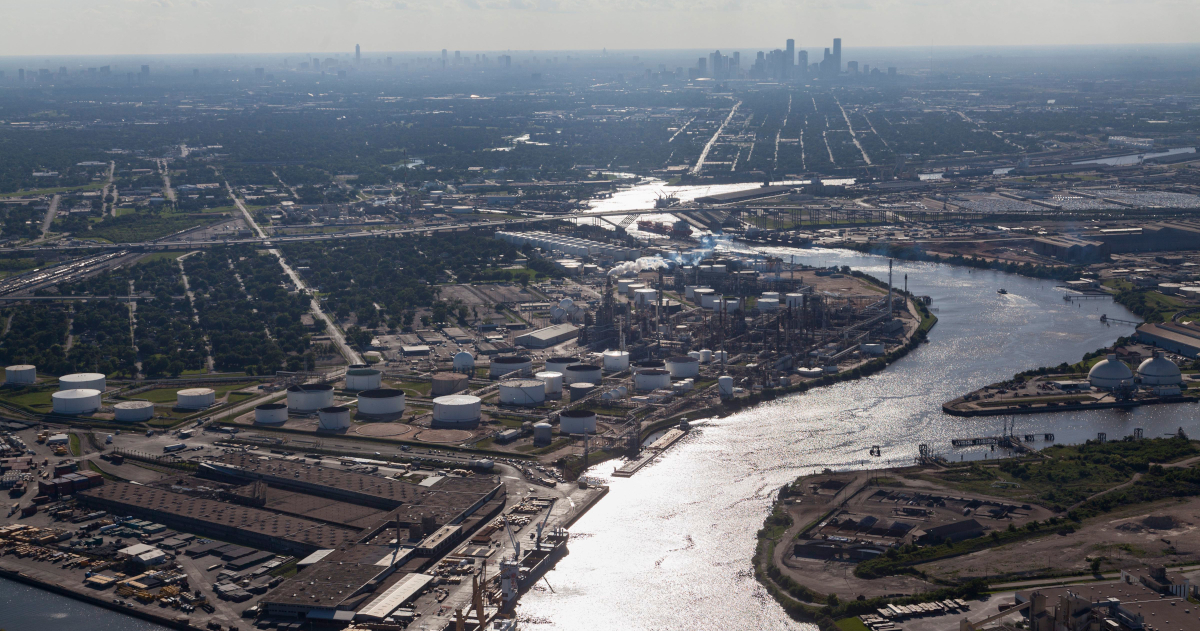Houston is known for being an oil town. But 50 years from now, will it still center on the petrochemical industry? Architecture professors Matt Johnson and Michael Kubo have set out to explore questions such as “what does it mean to design and build in the wake of an energy transition?” and “how do we rethink communities and landscapes that have been altered by industry?”
Their proposal, “Gulf: Architecture, Ecology, and Precarity on the Gulf Coast,” was awarded the Course Development Prize in Architecture, Climate Change, and Society by the Temple Hoyne Buell Center for the Study of American Architecture at Columbia University, in conjunction with the Association of Collegiate Schools of Architecture (ACSA). The 2020 competition enabled them to begin working on an innovative curriculum for the University of Houston’s Gerald D. Hines College of Architecture – at the intersection of history, architecture, and environmental design.
Collaborative and interdisciplinary, the studio and seminar class the architects aim to teach will focus on the Gulf Coast and Houston’s Ship Channel, called by some “The Chemical Coast.” The oil and gas industry is a part of what some scholars have called petroculture, a term that refers to the cultural impacts of a century and a half of petroleum production and use. As our culture starts to transition toward integrating energy sources beyond fossil fuels, the way we plan our cities and communities is going to change. Could urbanization re-appropriate formerly industrial areas for urban growth, or might new developments reclaim wild spaces? What are the historical impacts of environmental racism in communities along the Gulf? These are the types of questions they hope will not only spark creativity in their students, but also translate to real-world solutions for the zoning-deprived, sprawling city of Houston.
“Racially segregated ‘fenceline’ communities often sit in uneasy proximity to petrochemical plants. They can be subject to the environmental impacts of polluted soil, air, groundwater and aquifers,” said Johnson. “Chemicals and pollutants in these areas are at risk for leaks or spills, particularly during extreme weather events made worse by climate change,” continued Kubo.
One important aspect of the professors’ work involves the past – and that is where historian Kubo shines. “What did the landscape look like prior to urbanization?” he asks. This leads the curriculum down many paths, one of which is coastal prairie re-wilding – or, from an ecological standpoint, remediating the soil and recovering tidal flows.
“I think that architects should engage directly with urgent issues — climate change, borders, precarity, inequity, migration — but always with humility,” stated Johnson. “Architecture can certainly lend a hand, but trying to solve these problems entirely [through architecture] is a little bit out of step, I think. So we want to address issues of climate change and development on the Gulf Coast, but collaboration is our primary mode for examining these things. We’re interested in how communities can work together to plan for a healthier urban future.”
Image: Courtesy of David Guthrie
